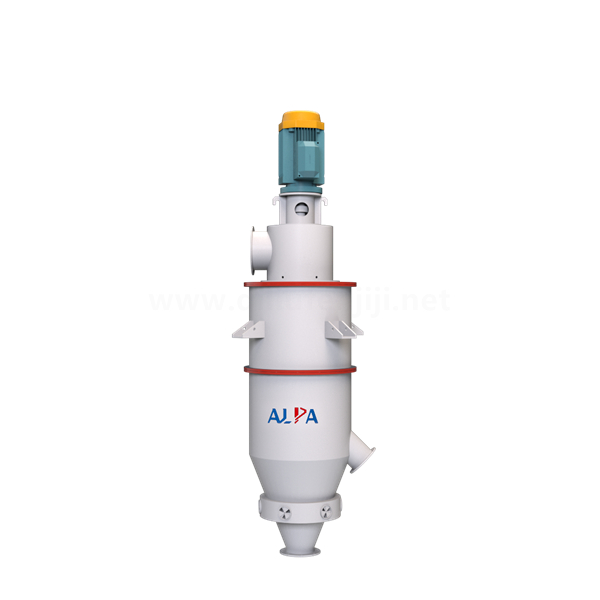
Air classifier works with cyclone separator, bag filter and suction fan to form a complete classifying system. Material would go from the bottom part of air classifier up to the classifying cham- ber by the air flow from suction fan.
Product Size: 150μm-2μm
Production Capacity: 20~60000kg/h
Feed Size: <150μm
Material Handling: It is widely used in chemical industry, minerals (especially suitable for the classification of non mineral products such as calcium carbonate, kaolin, quartz, talc and mica), metallurgy, abrasives, ceramics, refractories, medicine, pesticides, food, health products, new materials and other industries.,etc
Reading Volume:
marketing@alpapowder.com
Air classifier works with cyclone separator, bag filter and suction fan to form a complete classifying system. Material would go from the bottom part of air classifier up to the classifying cham- ber by the air flow from suction fan. The classifier wheel with high-speed rotation would create a strong centrifugal force to separate coarse and fine powder. Qualified fine powder would go through the wheel vane then into the cyclone or bag filter, while coarse entraining fine powder would lose its speed and fall down along the wall of chamber to the inlet of secondary air. The secondary air flow would disperse it further and separates coarse and fine powder. Fine powder would go up to the classi- fying chamber for further classifying, while coarse powder would fall down and will be dischanged from the bottom outlet.
According to the centrifugal force, gravity, inertial force, etc. of particles of different sizes in the medium (usually air), different trajectories are generated, so as to realize the separation of particles of different sizes.
A variety of classification rotor are available, and the output can be adjusted; speed of wheel is controlled by inverter, particle size can be adjusted freely. The classifying wheel can be made of ceramic materials, without metal pollution, meeting the requirements of high-purity materials.
Grinding is in closed system, little dust, low noise in a clean and environmentally friendly process.
In conjunction with ball mill, table roller mill and Raymond mill to form closed circulation.
Optional explosion-proof design, can also be upgraded to a nitrogen circulation system to meet the processing needs of flammable and explosive oxide materials.
Under the action of the fan, the material moves to the classification area at a high speed from the lower inlet of the classifier with the updraft. Under the action of the strong centrifugal force generated by the high-speed rotating classification turbine, the material is separated, and the fine particles meeting the particle size requirements enter the cyclone separator or dust collector through the blade gap of the classification wheel for collection. The velocity of some fine particles entrained by coarse particles disappears after hitting the wall, and then decreases to the secondary air outlet along the wall of the cylinder. Through the strong washing effect of the secondary air, the coarse and fine particles are separated, the fine particles rise to the secondary classification in the classification area, and the coarse particles drop to the discharge port for discharge.
| Parameters/specifications | FL300 | FL360 | FL450 | ITC-4 | ITC-5 | ITC-6 |
| Production Capacity(kg/h) | 20~1000 | 300~2000 | 1000~3000 | 8000~15000 | 15000~20000 | 20000~30000 |
| Product Size(d97:μm) | 6~150 | 5~150 | 5~150 | 10~150 | 15~150 | 20~150 |
| Classifying efficiency(%) | 60~90 | 60~90 | 60~90 | 60~90 | 60~90 | 60~90 |
| Installed Power(kW) | 11.5~42.5 | 18~60 | 63.5~105 | 120~160 | 90~200 | 170~310 |
Note: The production capacity is closely related to the particle size, specific gravity, hardness, moisture and other indicators of the raw materials. The above is only for selection reference.